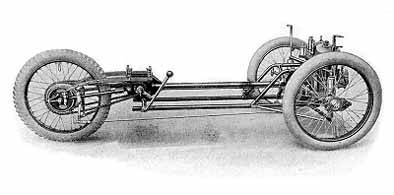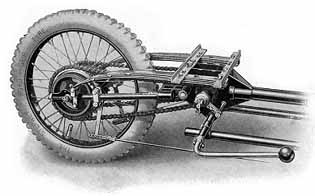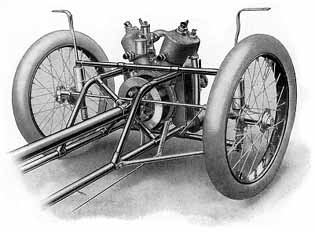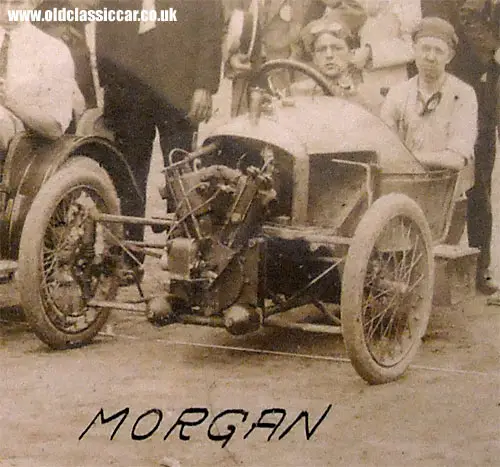The chassis of the Morgan three-wheeler consisted of little more than a few lengths of pipe brazed together.
Always faster than they had any right to be, Morgan trikes were trialed, rallied, hill-climbed and raced right from the start of production in 1910. And the men and women who raced these contraptions were among the bravest in an era when on-track courage requirements were as high as the penalties for misadventure were severe.
It consists of little more than a few lengths of pipe brazed together and covered in rudimentary tinwork, with a 1,000-cc Matchless V-twin bike engine up front sprouting drainpipe exhausts and driving its single rear wheel by chain. It would have been capable of hitting a truly alarming 100 mph (160 km/h).
And in contrast to the modern racing era’s five-point harnesses, full-face helmets, fireproof suits and carbon fibre structures, its driver and passenger are wearing motorcycle leathers and “pudding basin crash hats.”
The driver hasn’t even bothered with goggles. No safety harnesses are in evidence, as being thrown out in a crash was considered safer than being strapped in. And using one would have limited the “monkey’s” ability to shift his weight to aid cornering. Trikes often ran in the motorcycle sidecar class, which required a passenger.
The Morgan story began in 1909 when Henry Frederick Stanley Morgan – always known simply as HFS – a railway apprentice turned garage owner and cyclecar enthusiast, built his first motorcycle-engined three-wheeler.
This first Morgan was steered with a tiller, had an independent front suspension all but unique at the time and a high power-to-weight ratio that gave it excellent performance. It launched HFS on a venture that’s still family-owned and now in its 101st year.
Lightweight cyclecars were in vogue at the time, but the three-wheeled variety were considered dangerous by many, which prompted HFS to prove his then-single-seat machines in competition.
On Boxing Day, 1910, he set off on its first competitive outing, the two-day, 300-mile-plus, London to Exeter and back trial, and came home with a gold medal – the first of many his machines powered by a variety of engines would win – and the beginnings of a reputation.
A two-seater appeared in 1911 and a year later HFS drove one at just shy of a mile-a-minute pace on the banked Brooklands circuit to win the Cyclecar Trophy.
The first actual race a Morgan competed in was also at Brooklands that year. Harry Martin – and an unsung passenger who spent the race crouched on the floor under the scuttle to cut wind resistance – dominated the field, lapping at just under 60 mph.
Success continued in 1913, in long-distance reliability trials and speed events, but the high point was achieved across the channel in the Cyclecar Grand Prix at Amiens. One Morgan entry was driven by HFS, but broke a piston. A second had a wheel fall apart, but the third, with Gordon McMinnies at the wheel, won the event outright.











